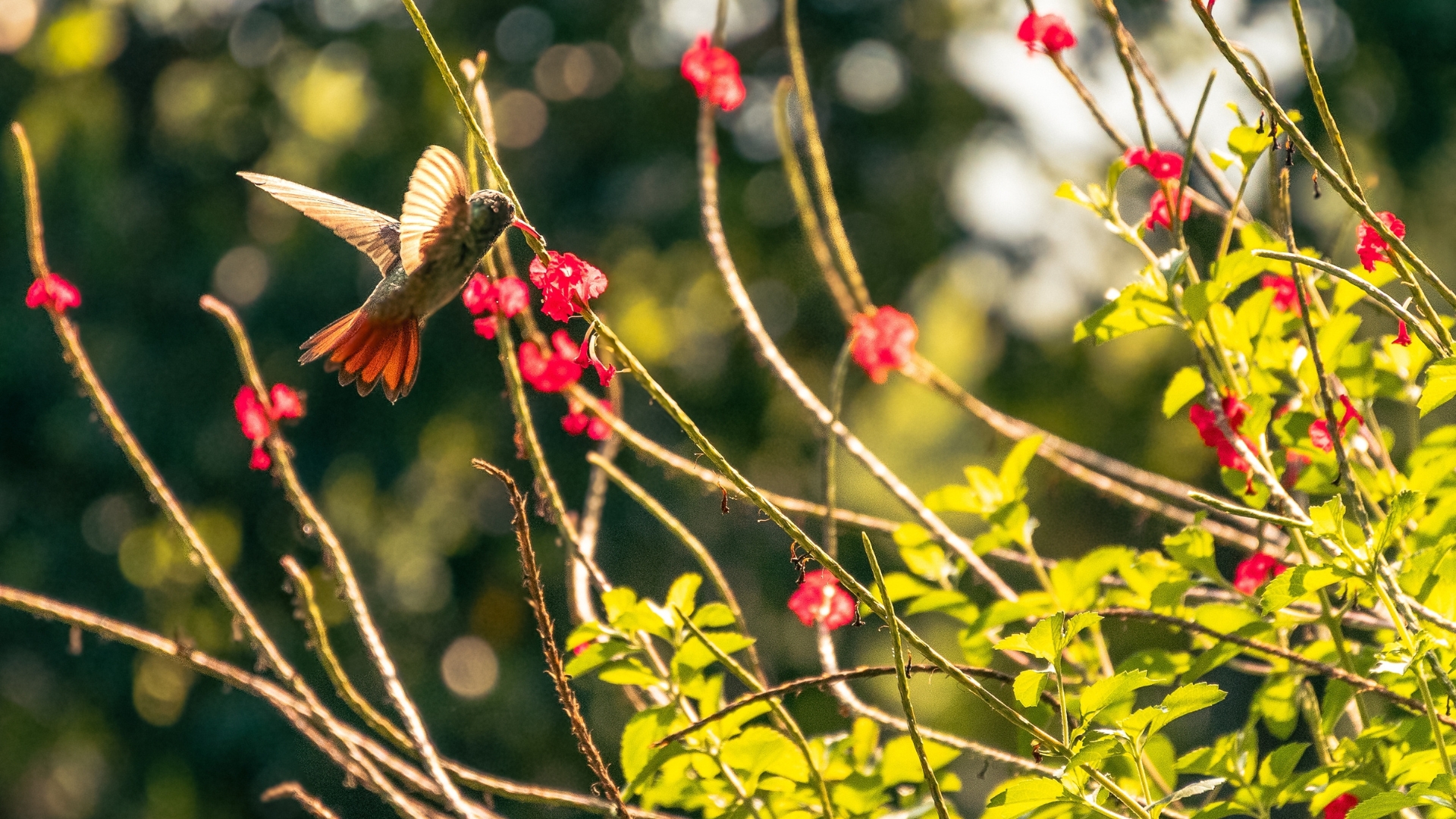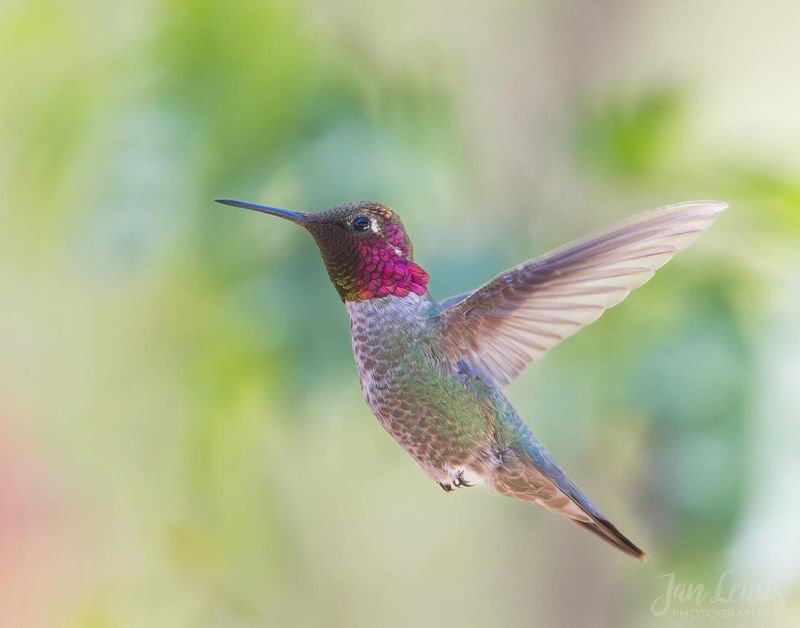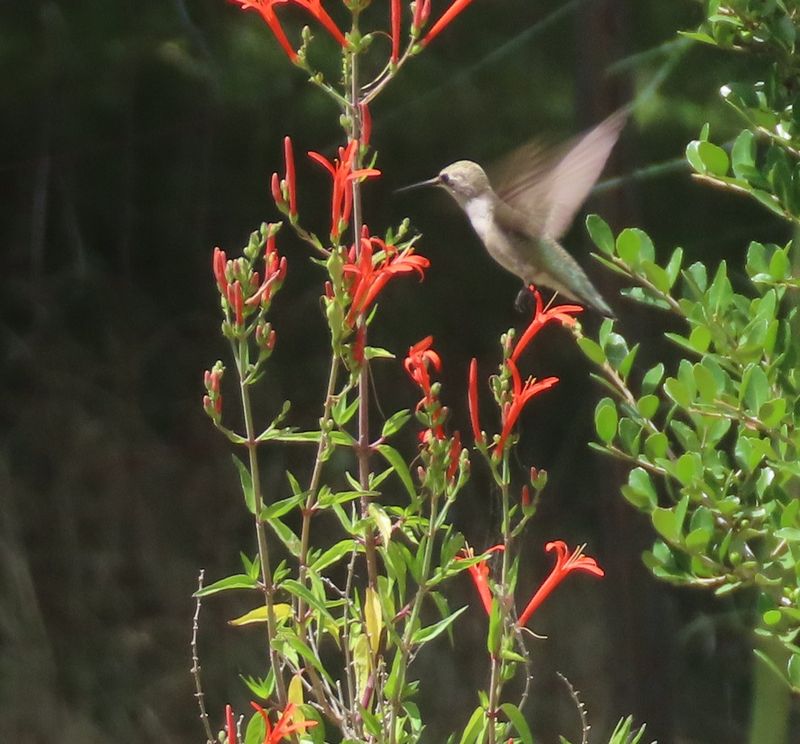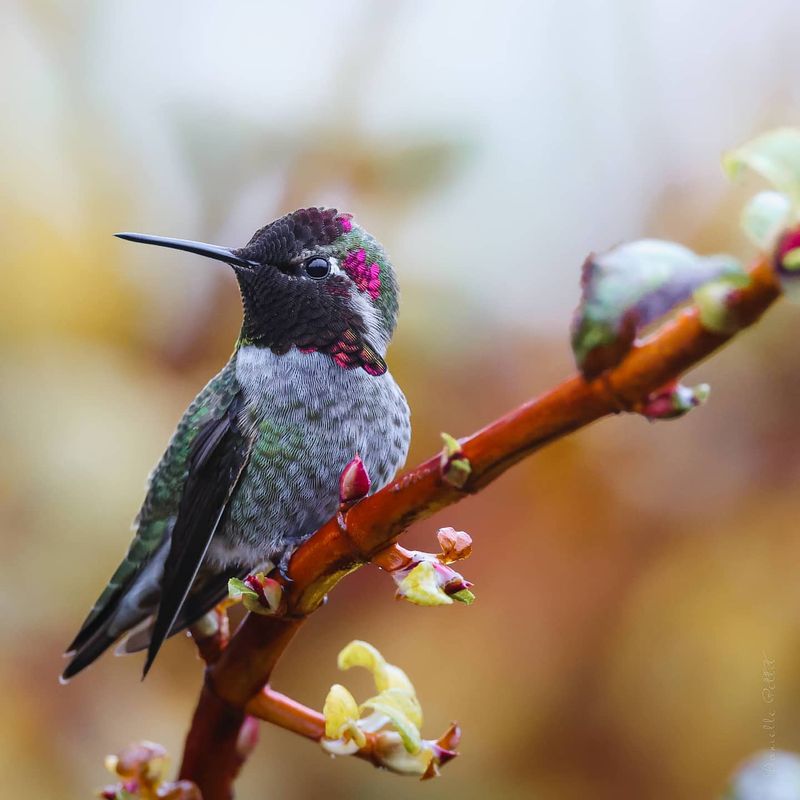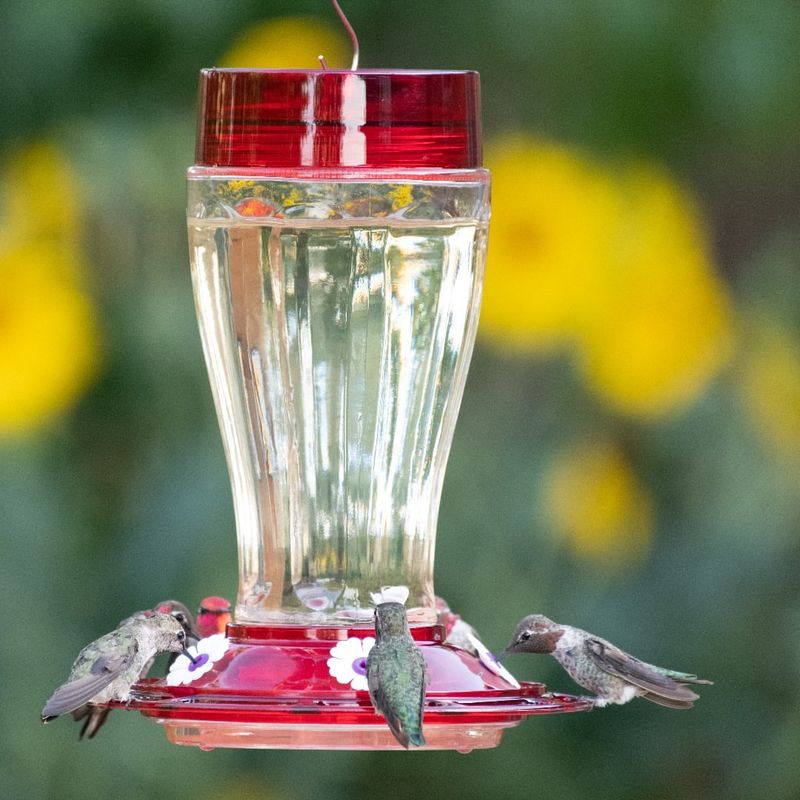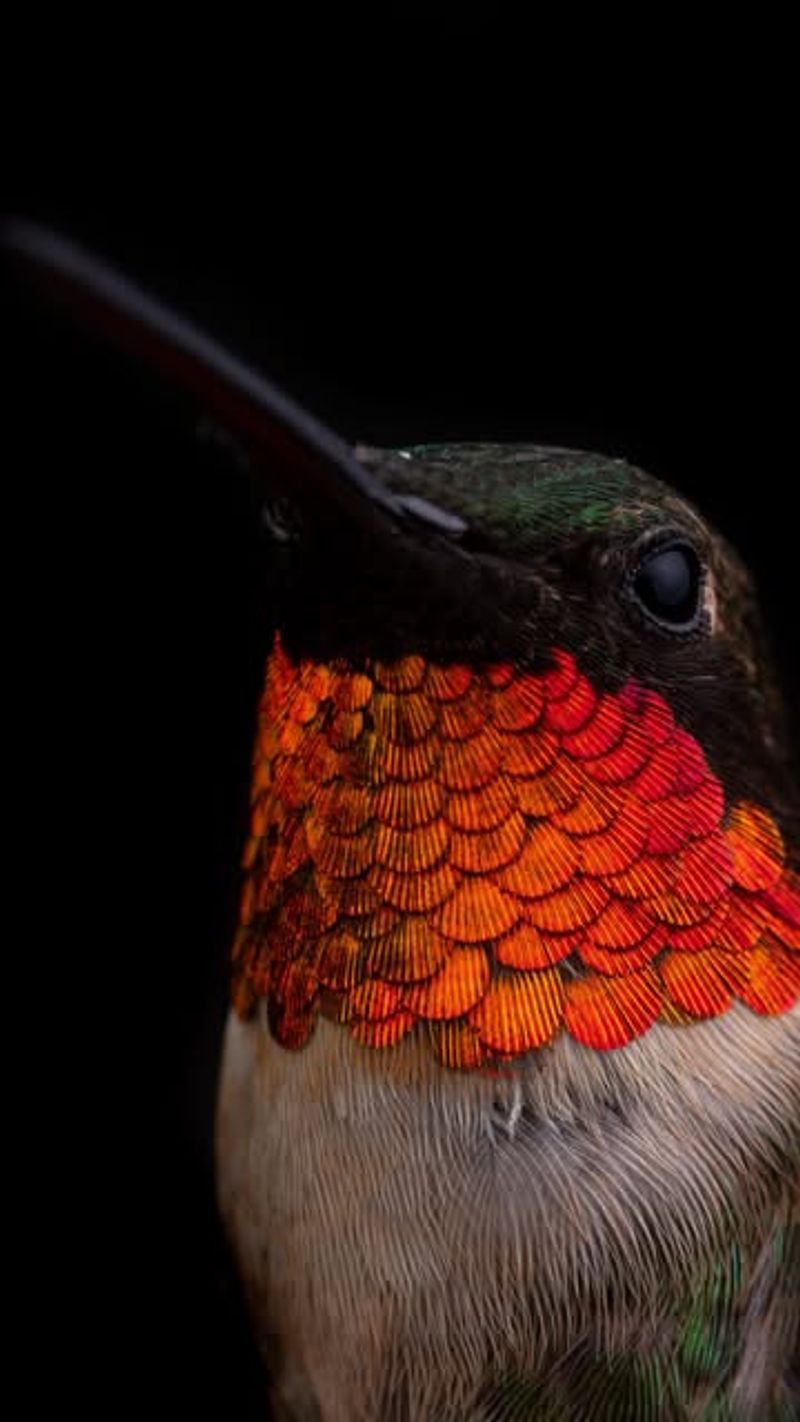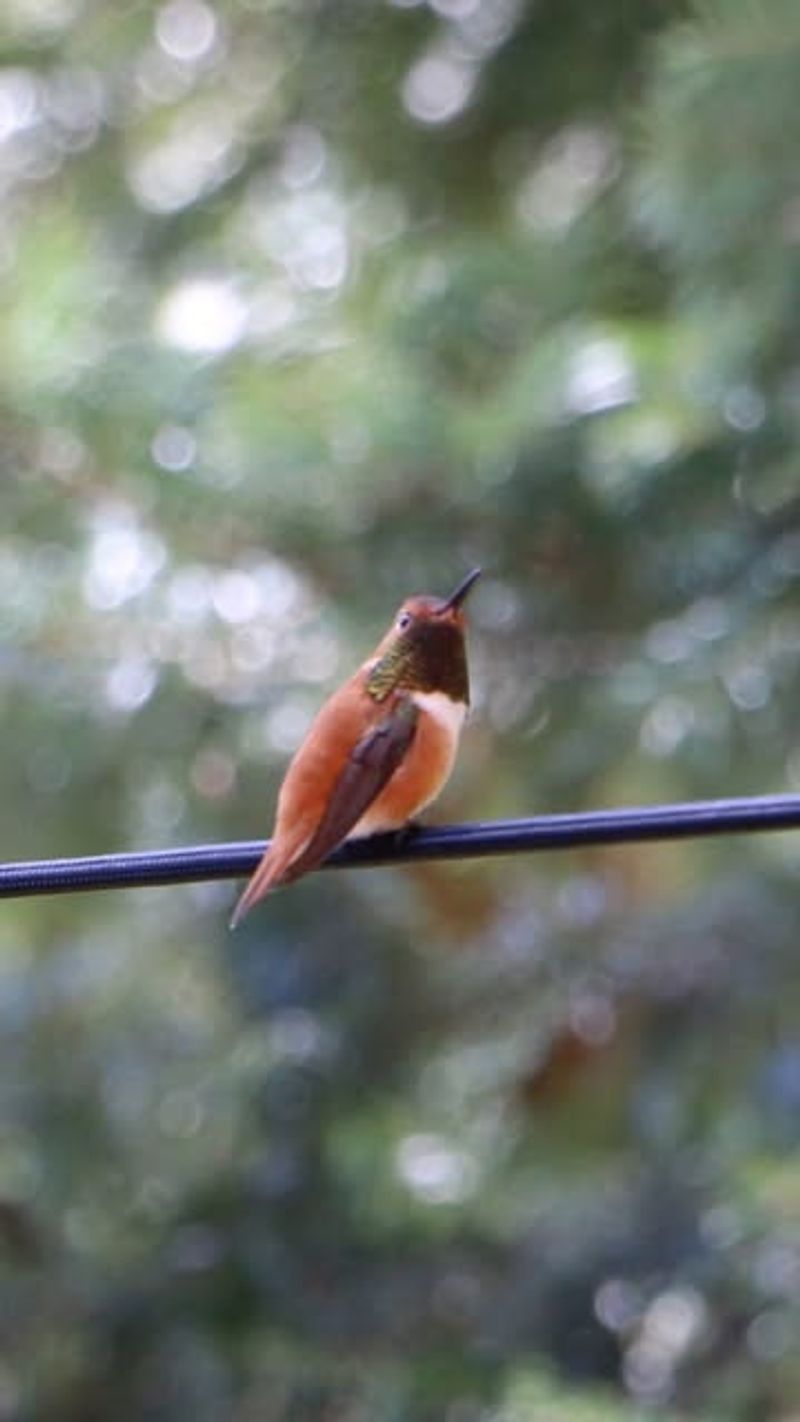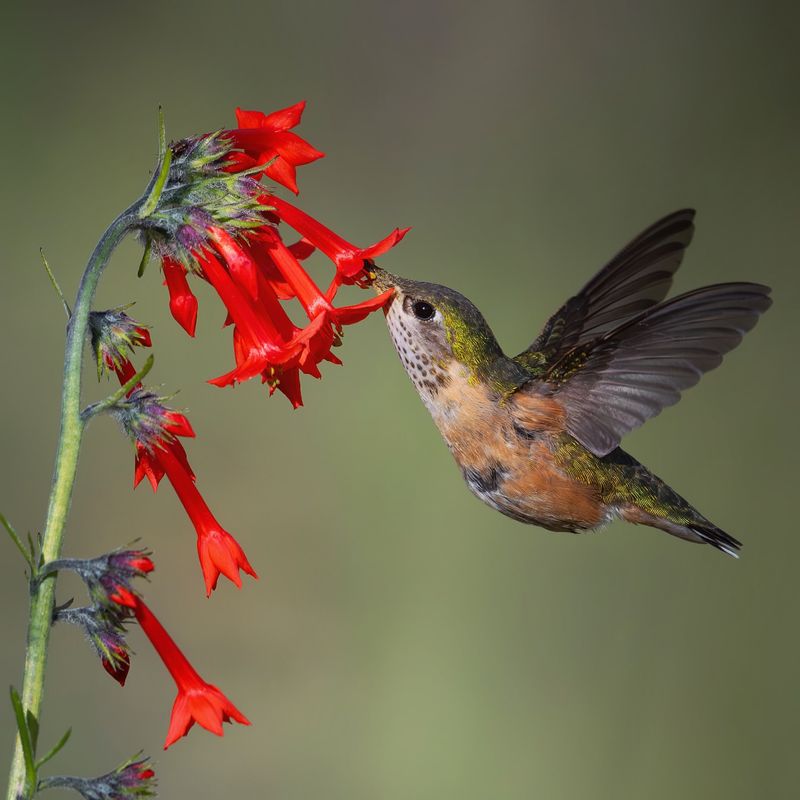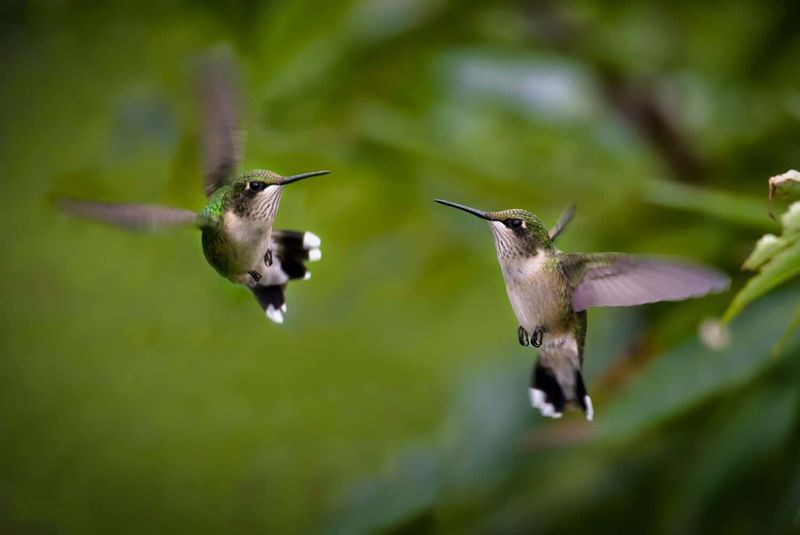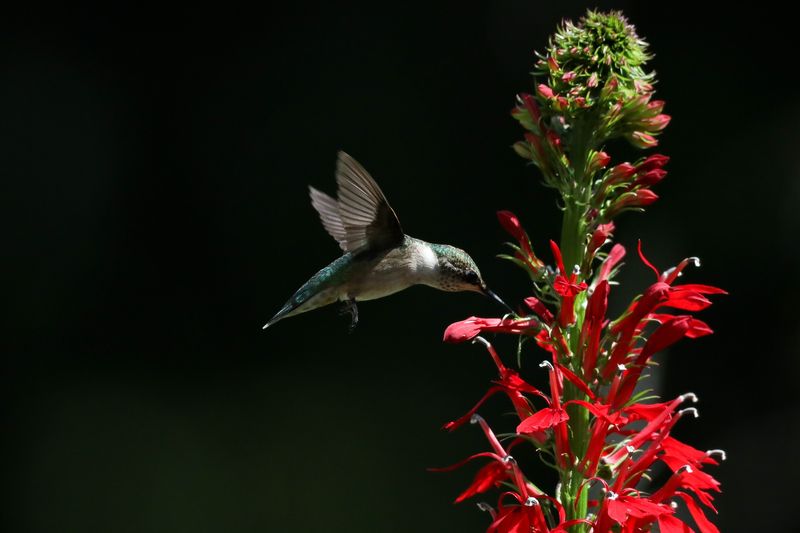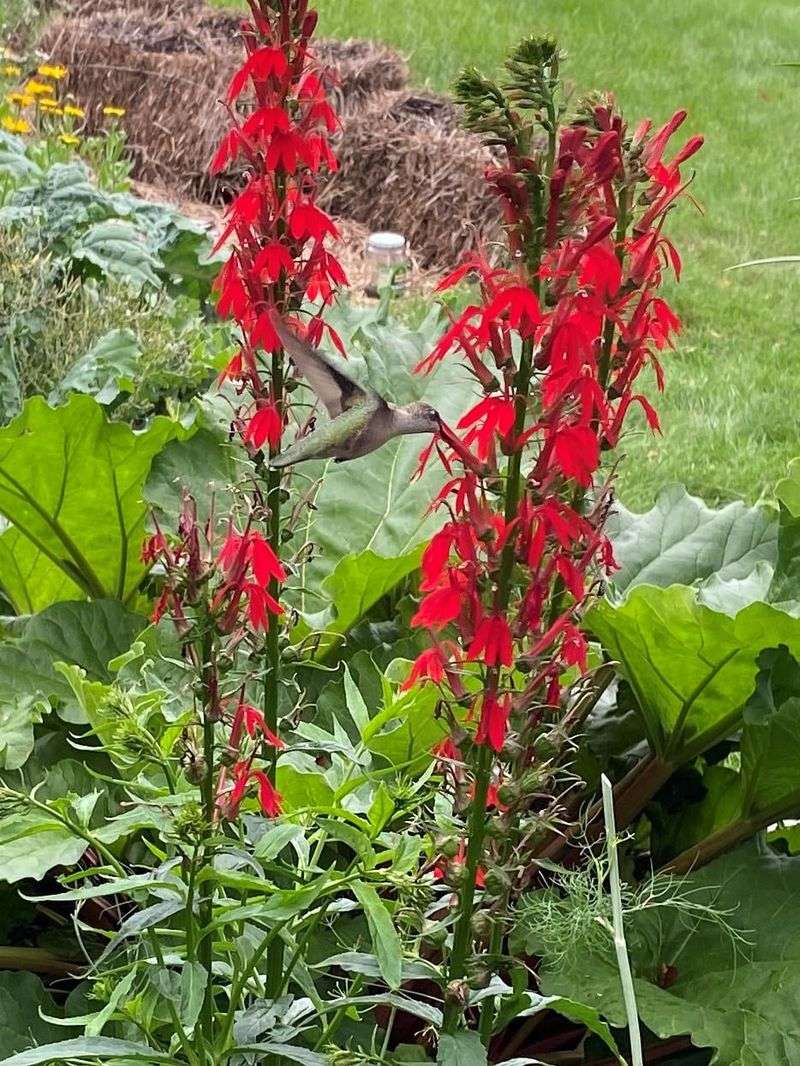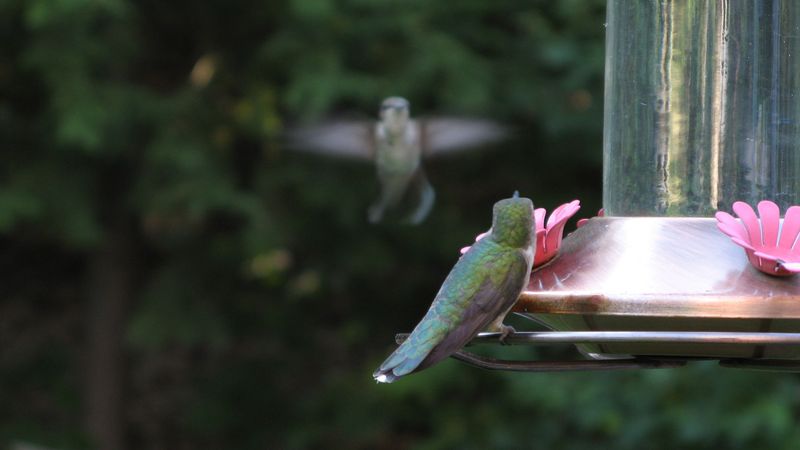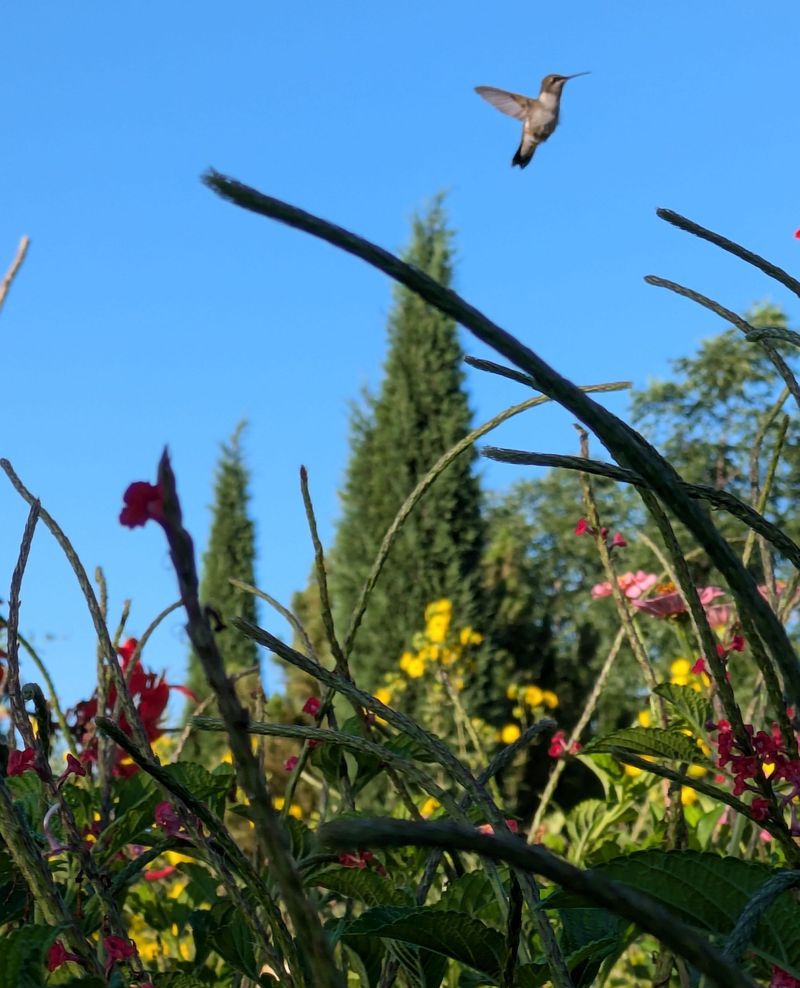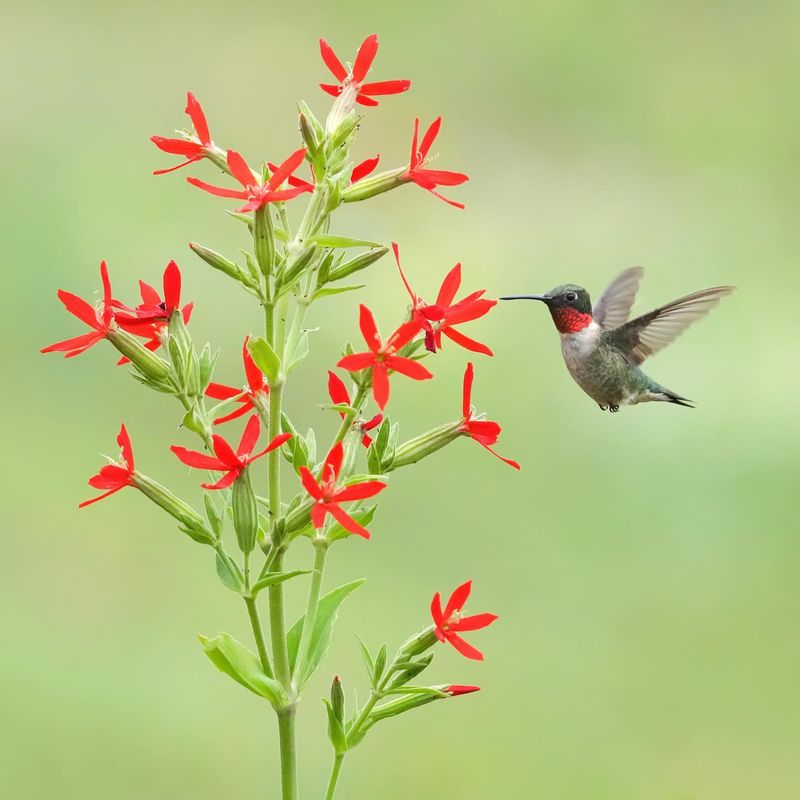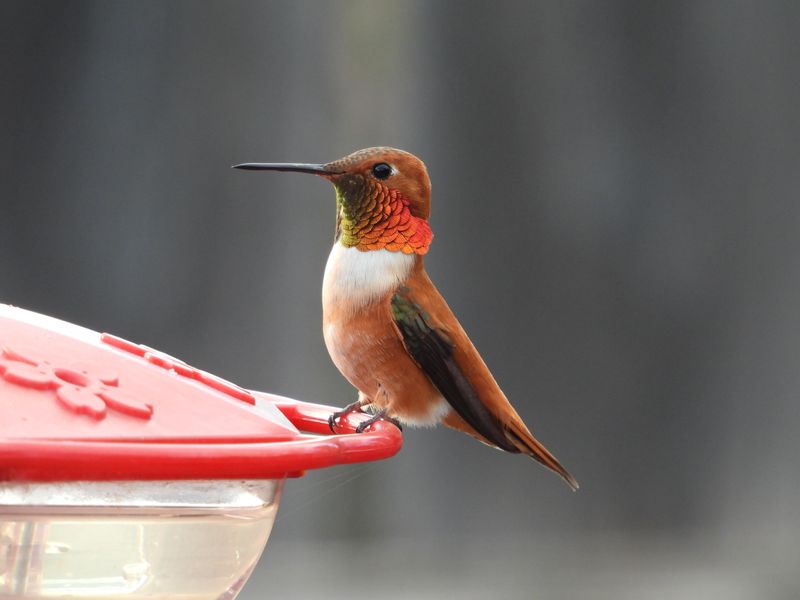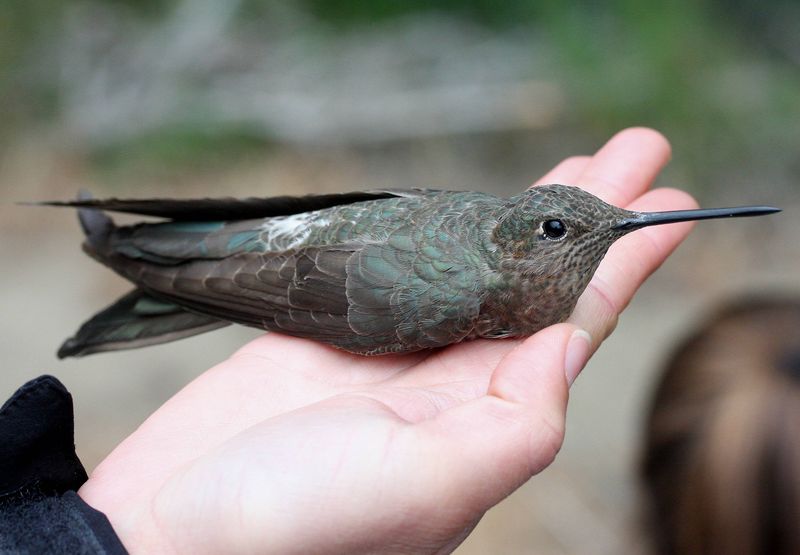Hummingbirds and the color red have a connection that’s more interesting than most people think. I always assumed they just liked it—but there’s a lot more going on behind those tiny wings.
From feeders to flowers, red can actually change how these little birds behave in your garden. I’ve gathered 15 surprising facts that made me see my backyard visitors in a whole new way.
If you’ve ever hung a red feeder and wondered why it worked, this one’s for you.
1. Red isn’t actually their favorite color
Contrary to popular belief, hummingbirds don’t actually see red as we do. Their vision extends into the ultraviolet spectrum, allowing them to perceive colors we can’t even imagine.
What attracts them to red flowers isn’t the redness itself, but the likelihood of finding nectar. They’ve learned through experience that red flowers often contain the sweet reward they seek.
2. Evolutionary partnership with red flowers
Many red flowers evolved specifically to attract hummingbirds as pollinators. These tubular blooms often contain high-energy nectar perfect for fueling the birds’ incredible metabolism.
The relationship benefits both parties: flowers get pollinated while hummingbirds get food. This beautiful example of coevolution has been developing for millions of years across the Americas.
3. Color perception differs from humans
Hummingbirds possess a fourth type of cone cell in their eyes that humans lack. This gives them tetrachromatic vision compared to our trichromatic sight.
With this extra dimension of color perception, they can distinguish between color combinations that look identical to us. Their world appears in a richer spectrum, helping them identify the most nectar-rich flowers with remarkable precision.
4. Red feeders attract more visitors
Backyard enthusiasts aren’t imagining things when they notice red feeders attracting more hummingbirds. These clever birds have learned to associate this vibrant color with food sources in both natural and human-created environments.
The color serves as a beacon, visible from remarkable distances as hummingbirds patrol their territory. Many experienced birders use red feeders without dyed nectar for maximum attraction.
5. Males flash red for courtship
Male ruby-throated hummingbirds sport brilliant red throat patches called gorgets that flash dramatically in sunlight. These iridescent feathers aren’t permanently red but appear to change color as light hits them from different angles.
During elaborate courtship displays, males dive and swing in U-shaped patterns to maximize the visual impact of these feathers. The more vibrant the display, the more likely they’ll attract a mate.
6. Red dye can be harmful
Despite their attraction to red, adding red food coloring to hummingbird nectar can potentially harm these delicate birds. The artificial dyes contain chemicals not found in natural nectar sources.
Experts recommend using clear sugar water in red feeders instead. The colored parts of the feeder provide all the visual attraction needed without risking the birds’ health with unnecessary additives.
7. Red flowers produce more nectar
Research shows that many red flowers produce significantly more nectar than flowers of other colors. This isn’t coincidental but part of their specialized strategy to attract hummingbirds rather than insects.
The extra energy investment in nectar production pays off for these plants, as hummingbirds travel longer distances and can transfer pollen between widely separated plants more effectively than most insects.
8. Territorial response to red
Hummingbirds often show aggressive territorial behavior toward anything red that enters their domain. They’ll dive-bomb red hats, shirts, or even cars that intrude into their claimed feeding area.
This territorial instinct helps them protect valuable nectar sources from competitors. Some gardeners even use red clothing strategically to attract these birds for closer observation, though it might result in a surprisingly close encounter!
9. Migration timing linked to red flowers
Hummingbird migration patterns often coincide with the blooming seasons of red flowers along their routes. These natural refueling stations provide critical energy for their incredible journeys spanning thousands of miles.
Climate change disrupting flowering times poses a serious threat to this delicate timing. Conservation efforts now focus on maintaining these floral corridors to support hummingbird populations during their exhausting migrations.
10. Red-dominated garden design
Creating a hummingbird haven means strategically incorporating red flowers at varying heights. These tiny birds remember feeding locations with remarkable precision and will return to reliable food sources year after year.
Successful hummingbird gardens feature red salvias, cardinal flowers, and trumpet vines arranged to create feeding territories. The vertical layering mimics natural habitats while providing multiple nectar sources throughout the growing season.
11. Red helps conserve energy
Hummingbirds operate on an incredibly tight energy budget, burning through calories at astonishing rates. Their attraction to red helps them efficiently locate high-calorie nectar sources without wasting precious energy on exploration.
This color-based navigation system allows them to visit hundreds of flowers daily while maintaining their rapid metabolism. Without this efficient feeding strategy, they couldn’t sustain their extraordinary aerial abilities.
12. Regional color preferences exist
Fascinating research reveals that hummingbird species in different regions show varying color preferences. While North American species strongly favor red, some tropical hummingbirds show equal attraction to purple, pink, or orange blooms.
These regional preferences reflect the native flowering plants in their habitats. Specialized bill shapes have evolved alongside these flowers, creating unique relationships between specific hummingbird species and their preferred nectar sources.
13. Red triggers feeding response
The sight of red triggers an immediate physiological response in hummingbirds, preparing their bodies for feeding before they even reach the flower. Their heart rate increases and digestive system activates in anticipation.
This automatic response helps them maximize energy intake during brief feeding stops. Their specialized tongues can lick up to 15 times per second when they reach nectar sources, making efficient use of every feeding opportunity.
14. Red affects climate adaptation
As climate change alters habitats, the relationship between hummingbirds and red flowers becomes increasingly important for both species’ survival. These birds serve as indicator species for ecosystem health.
Conservation biologists now track flowering times of red-bloomed plants to monitor climate impacts. Citizen science projects engaging gardeners to record hummingbird visits to red flowers provide valuable data for understanding these environmental changes.
15. Cultural significance spans centuries
Many indigenous cultures across the Americas have celebrated the connection between hummingbirds and red flowers in their art and mythology for centuries. These tiny birds often symbolize joy, love, and healing in traditional stories.
Ancient Aztec nobility wore red hummingbird feathers as symbols of strength and energy. Today, this cultural appreciation continues through conservation efforts designed to protect both the birds and their preferred flowering plants.

